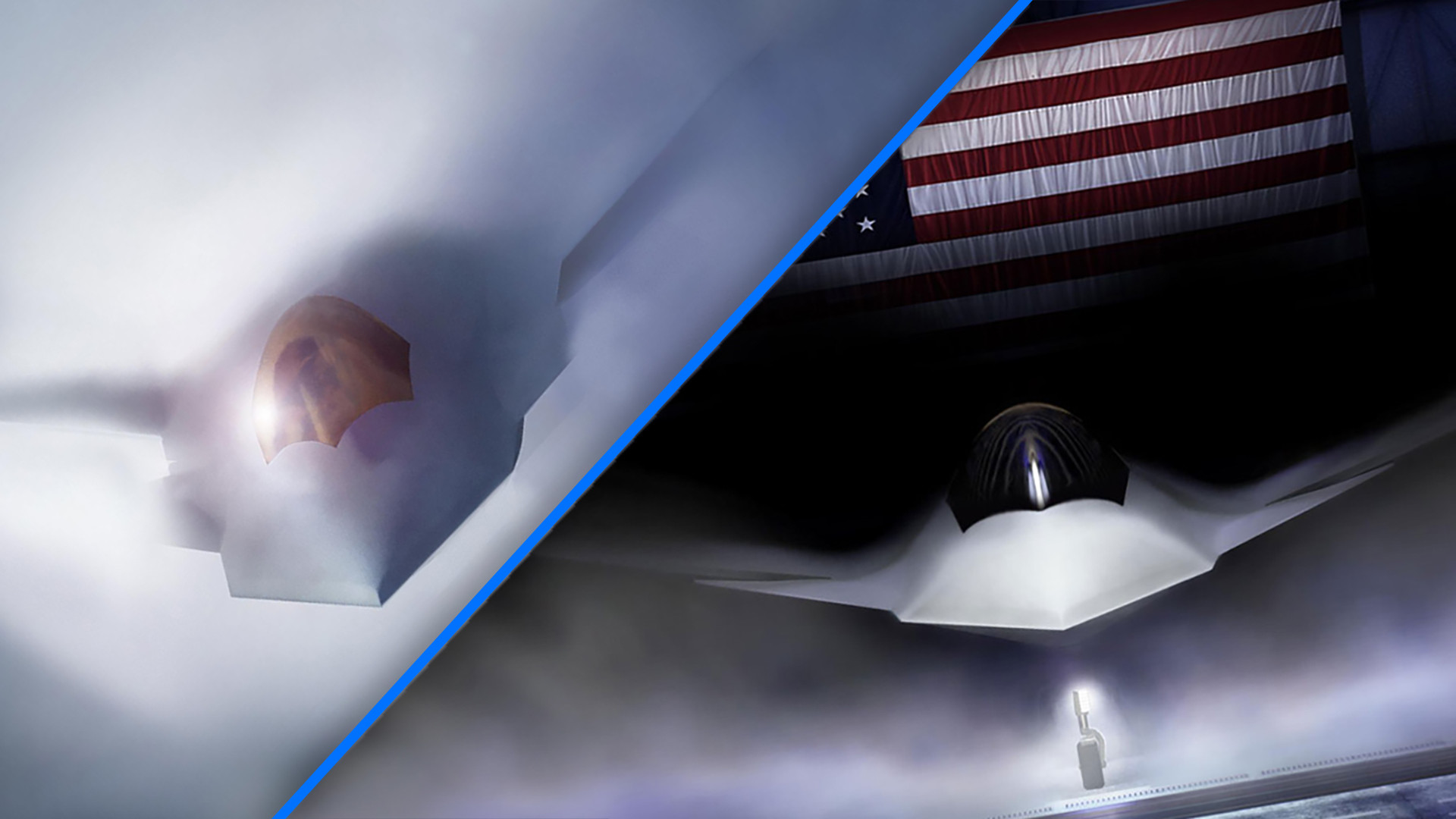
USAF
Significant parts of the veil of secrecy over the origins of Boeing’s F-47 sixth-generation stealth fighter, and the decisions and tradeoffs made along the way, have now been pulled back. New revelations about the future of the Air Force’s next-generation combat jet plans, which might include additional tranches of different aircraft, have now emerged, as well.
Former Secretary of the Air Force Frank Kendall and former Assistant Secretary of the Air Force for Acquisition, Technology & Logistics Andrew Hunter talked at length about the F-47 and the related Next Generation Air Dominance (NGAD) initiative, as well as early related research and development efforts, in the latest edition of Defense & Aerospace Report‘s Air Power Podcast. In the mid-2010s, Kendall, then Under Secretary of Defense for Acquisition, Technology and Logistics, first started the ball rolling with the Defense Advanced Research Projects Agency-led Aerospace Innovation Initiative, which produced multiple flying demonstrator aircraft.
 A rendering of the Boeing F-47. USAF
A rendering of the Boeing F-47. USAF The demonstrator aircraft are where the podcast’s hosts Vago Muradian, editor-in-chief of Defense & Aerospace Report, and J.J. Gertler, director of The Defense Concepts Organization and senior analyst at the Teal Group, start the conversion with Kendall and Hunter, which is well worth listening to in full. TWZ has distilled down the main takeaways from the ensuing discussion, which are as follows
- The Aerospace Innovation Initiative was a $1 billion effort led by the Defense Advanced Research Projects Agency (DARPA), but that also included the U.S. Air Force and the U.S. Navy.
- “We hadn’t finalized the configuration,” but “there were certain desirable characteristics we were after” when the initiative started, according to Kendall.
- “What we call X-planes, experimental aircraft” were designed and built “to prove out the more risky and important technologies we were after,” he added.
- “Really their intent was to prove out the characteristics of a platform of the nature of a sixth generation air dominance platform,” including unspecified “capabilities, as well as range and other aspects you would expect with an aircraft,” Hunter said.
- “Industrial base considerations had a lot to do with me starting the Aerospace Innovation Initiative. I wanted to reintroduce competition for tactical aircraft” after years of Lockheed Martin market dominance, especially with the F-22 Raptor and F-35 Joint Strike Fighter, Kendall added.
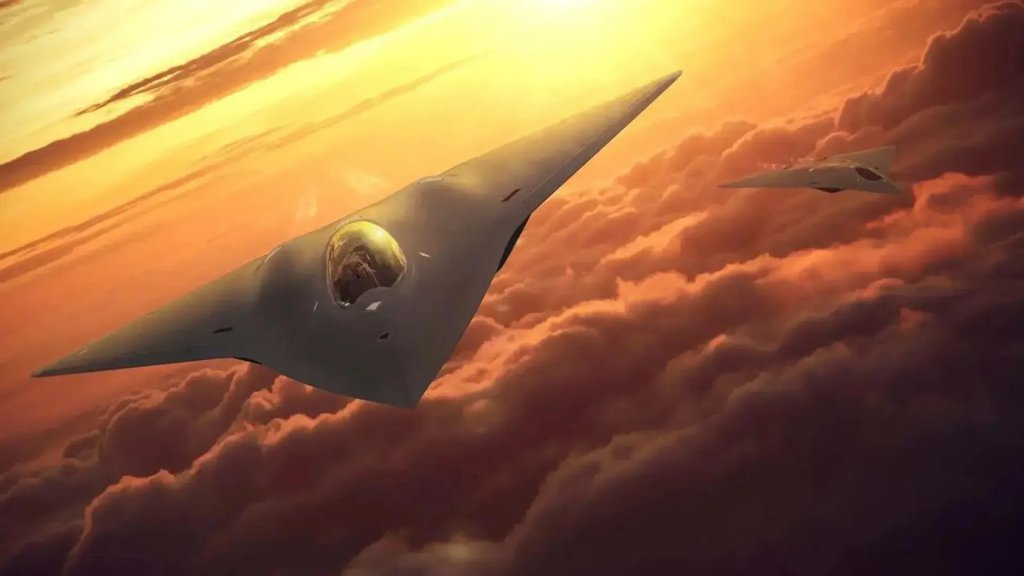 A now-dated Lockheed Martin rendering of a notional sixth-generation stealth combat jet. Lockheed Martin
A now-dated Lockheed Martin rendering of a notional sixth-generation stealth combat jet. Lockheed Martin - DARPA and the Air Force have previously confirmed that two X-planes were built for the Aerospace Innovation Initiative, and that they first flew in 2019 and 2022, respectively. Kendall has now added the detail that they were built sometime after 2017.
- Kendall also stressed that the demonstrators were entirely experimental demonstrator aircraft and not reflective of a production prototype for a “tactical design.”
- “We can tell you that they were not all built by the same company. They were competitive,” he noted. We know that Boeing and Lockheed both built demonstrators.
- The “tactical” requirements for what eventually led to the F-47 were developed by the Air Force during President Donald Trump’s first administration, per the former Secretary of the Air Force.
- A Program Executive Office for Advanced Aviation, which was stood up in 2019, was responsible for much of that work. It has since evolved into the Agile Development Office that manages the entire NGAD initiative.
- “I think part of the reason to create a new office for advanced aircraft was [that] NGAD was envisioned as a different way of solving the problem” that “wasn’t necessarily looking for something or wasn’t presupposing the answer was something that would look like a traditional fighter,” according to Hunter.
- The original NGAD combat jet requirements were centered heavily on the idea of a direct replacement for the F-22 Raptor to perform the “job of going into a dense, highly protected airspace, and being able to penetrate and being able to establish your superiority, at least temporarily within over enemy territory,” Kendall said.
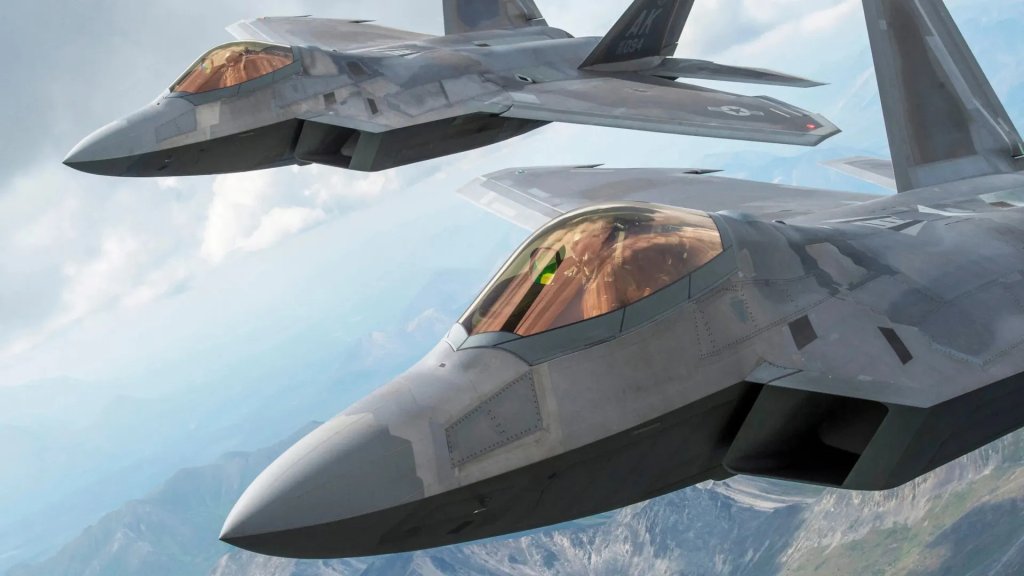 A pair of F-22s. USAF
A pair of F-22s. USAF - The requirements subsequently evolved to put substantial emphasis on the “quarterback role” controlling Collaborative Combat Aircraft (CCA) drones.
- Kendall described the F-47 as having, in very broad strokes, an “aircraft configuration itself [that] is going to be [a] pretty direct descendant of F-22.”
- Hunter highlighted significant new networking capabilities, including for exchanging sensor data with other platforms, thanks to common underlying systems reference architecture, which will be found on the F-47.
- Hunter pointed out that the common architecture extends beyond the Air Force, and will help F-47 and the Navy’s future F/A-XX next-generation combat jet be more “seamlessly” interoperable with each other and other assets.
- The F-47 and whatever design is selected for F/A-XX are also set to leverage a pool of common subsystems, including advanced sensors and communications suites.
 A rendering of a pair of notional naval sixth-generation combat jets. Boeing
A rendering of a pair of notional naval sixth-generation combat jets. Boeing - Kendall also emphasized the significant amount of control that the U.S. government will exercise over the design and other intellectual property surrounding the jet, which could make it easier and faster to upgrade and otherwise evolve over time.
- “We’re not a prisoner of a prime [contractor], basically, for upgrades and for competing for modular components that can be added to replace other components as the life of the aircraft goes on,” the former Air Force secretary said.
- Kendall has been an outspoken critic of Lockheed Martin’s dominance when it comes to the F-35 program, describing it as “acquisition malpractice.”
- Kendall elaborated on three core factors that led to his decision to pause the NGAD combat jet program for a deep review last year.
- “The one that led to the pause initially was we just didn’t have enough money.”
- Kendall said that completing the research and development phase of the program will take at least another $20 billion, a figure he has publicly given in the past.
- “We just couldn’t do it unless we were going to be given more money, and there was no place to trade off left within the Air Force to fund it.”
- Secondly, the evolution of the CCA program called into question the core function of the NGAD combat jet and whether being able to perform the penetrating counter-air mission to the same degree was as critical.
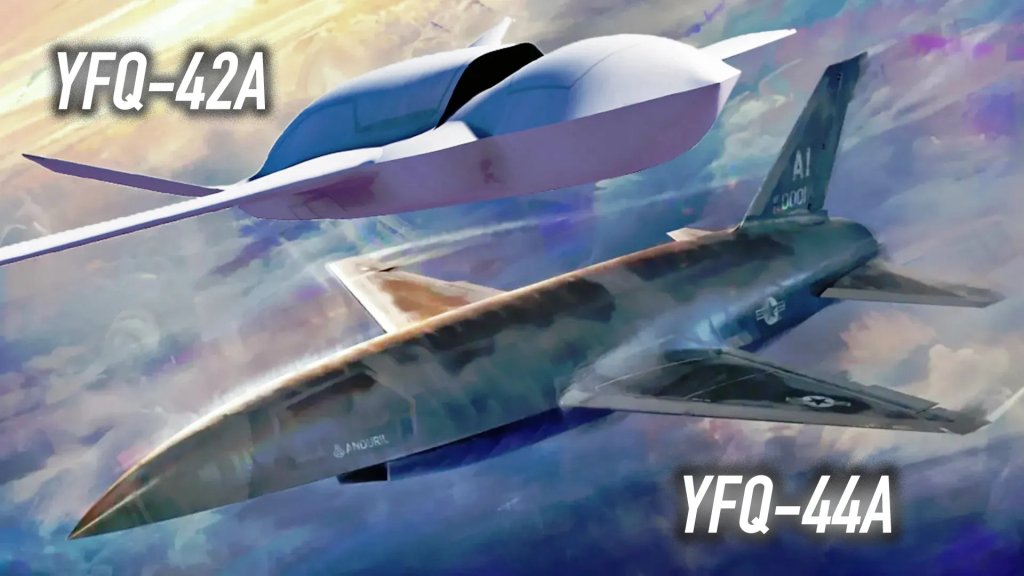 A composite rendering of the two CCA designs currently in development, GEneral Atomics YFQ-42A and Anduril’s YFQ-44A. General Atomics/Anduril
A composite rendering of the two CCA designs currently in development, GEneral Atomics YFQ-42A and Anduril’s YFQ-44A. General Atomics/Anduril - Kendall noted, as have other Air Force officials in recent months, that the review of the NGAD combat jet program determined that such an aircraft would be a key element to achieving air superiority in the future, especially in a high-end fight, with the lowest amount of risk.
- The third and last of the factors that contributed to the pause was questions about “opportunity cost” and whether the NGAD combat jet program’s high price point would prevent the Air Force from pursuing other critical efforts.
- Kendall said he had been willing to trade the NGAD combat jet for investments in new counter-space capabilities and improved base defenses.
- “We need to move forward aggressively with counter-space. The Chinese were fielding tens or hundreds of satellites designed to target the joint force and enable long-range fires against the joint force. So we had to respond to that.”
- “The Chinese have fielded literally thousands of weapons to attack those bases, cruise missiles, ballistic missiles and hypersonics. So having an effective, cost-effective ability to defend them is very important.”
- To the latter point, the former Secretary of the Air Force highlighted a broad need for lower-cost alternatives to Patriot and Terminal High Altitude Area Defense (THAAD) surface-to-air interceptors to help defend against large barrages of threats.
- This underscores the Air Force’s continued preference, at least publicly, to focus on improved and expanded active base defenses like surface-to-air missiles, rather than new hardened physical infrastructure. This is now a heated topic of debate that TWZ has been following closely.
 An F-16 sits inside a hardened aircraft shelter. USAF
An F-16 sits inside a hardened aircraft shelter. USAF - “If we leave the joint force vulnerable to targeting from space by the Chinese, and if we leave our bases vulnerable to attack, the F-22s, the F-35s, and the F-47s will never get off the ground.”
- Kendall said he was unaware of what tradeoffs the Trump administration may have made or may be planning to make as part of the decision on the F-47.
- He also said that there was no indication that the core design of the F-47 had changed in any fundamental way from what it had been prior to the pause.
- Kendall said that the F-47 was the product of a very real competition and that Boeing and Lockheed Martin presented viable and distinctly different designs, though he said he could elaborate on the specifics.
- One company moved faster than the other to meet key milestones, but they both got there in the end, he added.
- “These are new designs. They’re aggressive designs. They’ve got a lot of new technologies are going to be integrated together,” according to Kendall.
- Hunter described both designs as “quite creative.”
- Hunter, speaking generally, also noted that incumbent contractors (understood in this case to be Lockheed Martin given its previous win in the Joint Strike Fighter competition) can often come across as more risk averse while challengers are often willing to risk more.
- Kendall said more bluntly that the “incentives may have been stronger for Boeing. In some ways, they needed to win this one more than Lockheed did.”
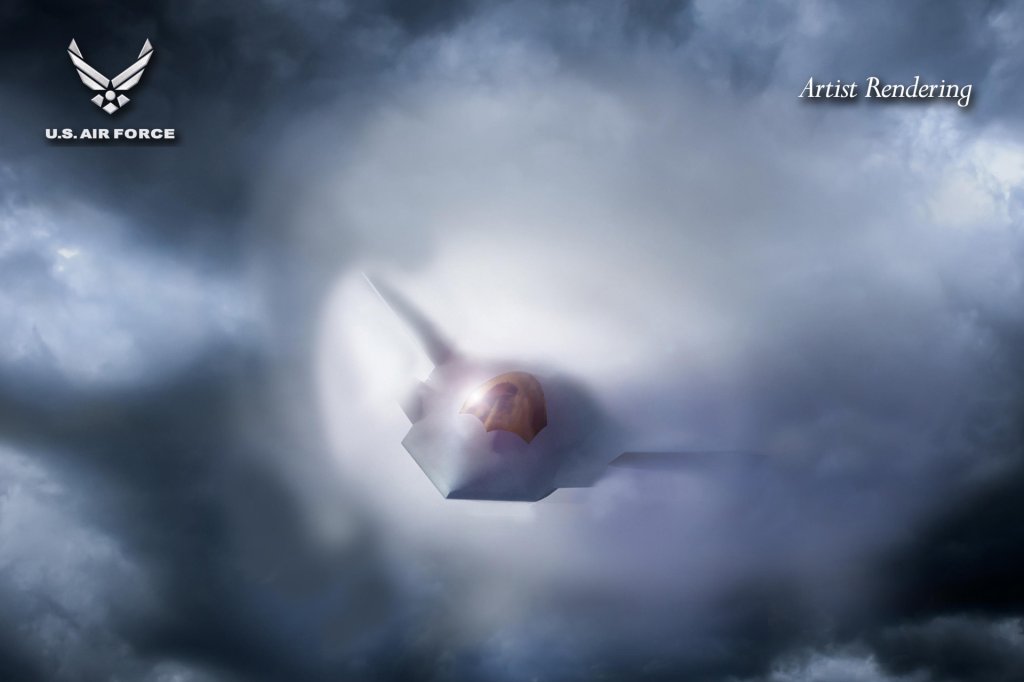 Another F-47 rendering. USAF
Another F-47 rendering. USAF - Hunter separately indicated that Northrop Grumman was in line to be cut from the NGAD combat jet competition before the company announced what it described as a voluntary withdrawal in 2023.
- The F-47’s unit cost is expected to be at least twice that of an F-35, or in the $160 million to $180 million range, based on publicly available information, according to Kendall. He has previously said the final price point could be “multiple hundreds of millions of dollars.”
- In terms of the ultimate selection of the F-47, Kendall also notes that “there isn’t a readiness at this point, a confidence in the uncrewed aircraft to bet entirely on them, right? And I tend to share that view.”
- Kendall said he was doubtful any U.S. allies or partners would be willing to buy an export version of the F-47, especially given the expected unit cost and the potential for those jets to come with significant downgraded capabilities.
- Hunter noted that most successful large U.S. military acquisition programs do get to a point where export sales occur and that the fact that this didn’t happen for F-22 was one of many factors that contributed to their high upfront and sustainment costs.
- Hunter also disclosed that the NGAD combat jet program, at least as it existed under his tenure, was expecting to see multiple iterative tranches in the same vein as what is happening in the CCA drone program.
- The F-47 may just be “Increment 1” of a family of NGAD combat jet designs.
- Kendall also stressed that F-47 is not a silver-bullet solution to achieving air superiority and advocated for continued investment in the CCA program and the Block 4 upgrade effort for the F-35.
Much still remains to be learned about the F-47 and the full extent of the ramifications that continuing with the program will have for the Air Force and its future force structure. We do now have a much fuller picture of the service arrived its choice for its next-generation stealth fighter.
Contact the author: [email protected]

 By The War Zone | Created at 2025-03-29 00:01:24 | Updated at 2025-03-31 15:09:32
2 days ago
By The War Zone | Created at 2025-03-29 00:01:24 | Updated at 2025-03-31 15:09:32
2 days ago








